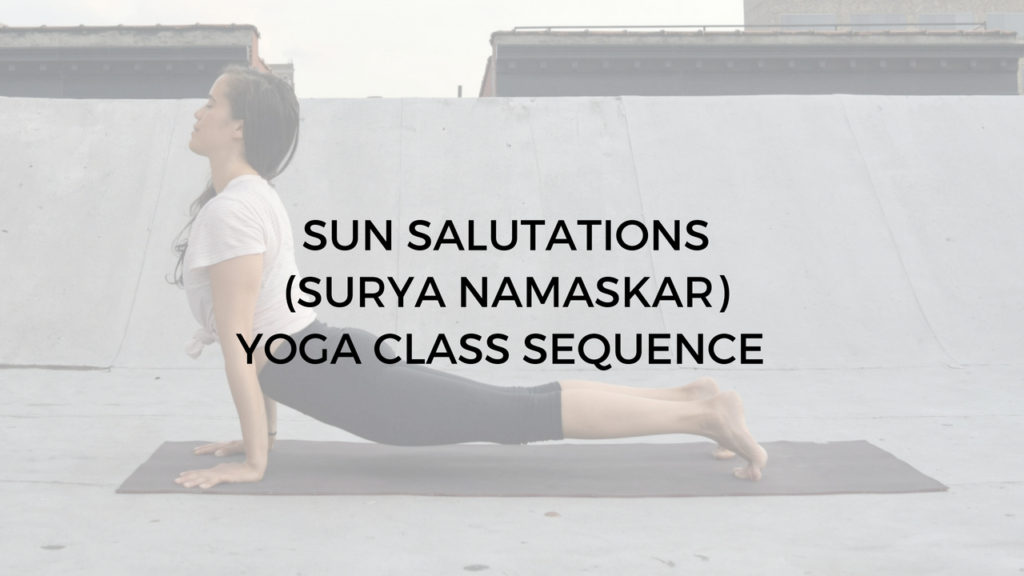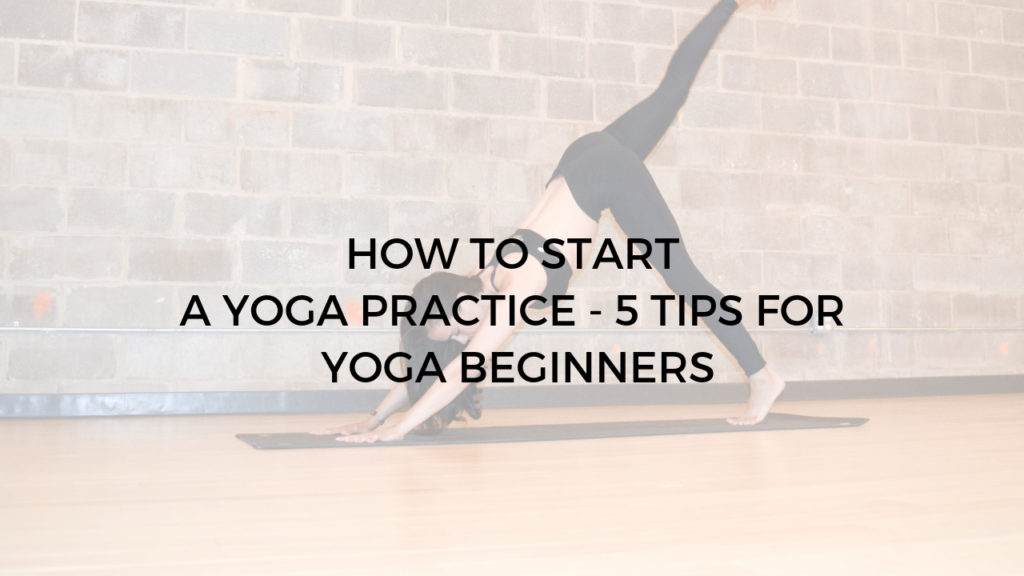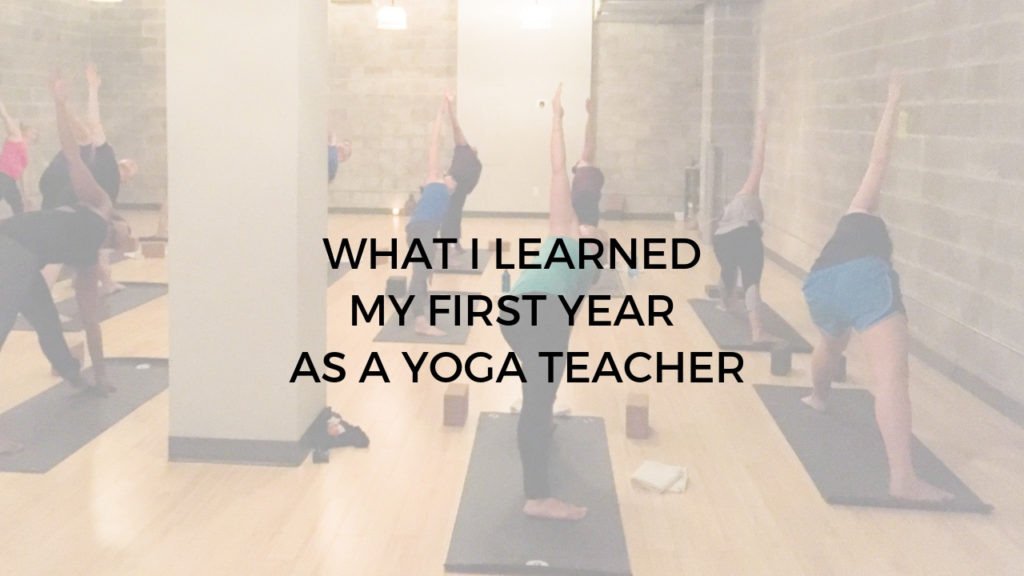A Sun Salutation (Surya Namaskar, in Sanskrit) is a group of poses practiced one after the other using the breath to link them together. In Ashtanga and Vinyasa yoga, Sun Salutations are practiced to warm up the body in preparation for deeper and more rigorous poses.
The are two types of Sun Salutations. Sun Salutation A is more suitable for beginners, and the more traditional and foundational type. Sun Salutation B is a more rigorous form as it includes some warrior and standing poses. Sun B is usually practiced in intermediate and advanced classes.
The Sun Salutations are a workout on their own and a great way to start the day. By linking the breath with each movement, we flow, build heat, and create focus within the mind. The following is a Sun Salutation A sequence that can be modified for beginners.
If you’re just starting out, practice the individual poses first (without linking them together). Follow the alignment points, observe your body and notice how you feel in each pose. Then, you can start to link them together using the following breathing sequence:
Inhale, upward salute
Exhale, forward fold
Inhale, half forward fold
Exhale, plank and lower to Chaturanga or all the way down.
Inhale, upward facing dow, or Cobra
Exhale, downdog.
**Hold downdog for 3-5 breaths**
Exhale, jump forward
Inhale, half forward fold
Exhale, forward fold
Inhale, upward salute
Exhale, mountain pose
1. Mountain Pose (Tadasana)
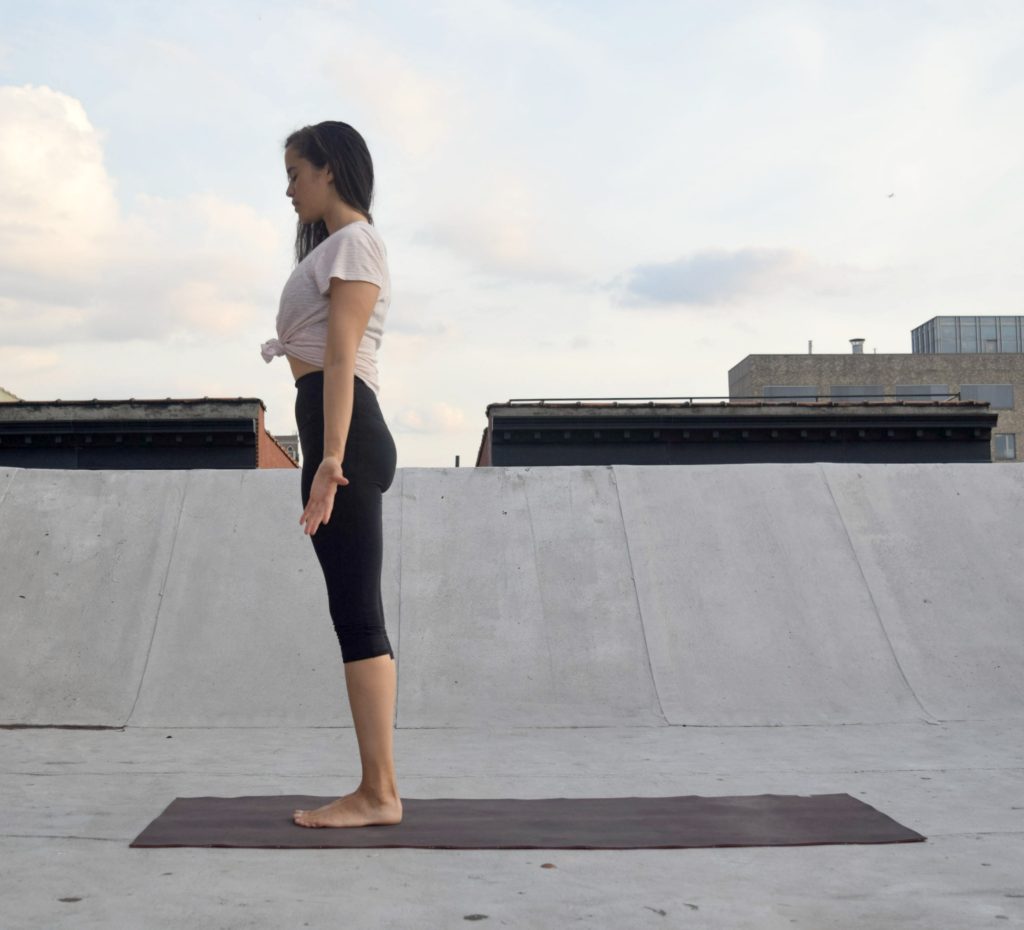
Tadasana is perhaps the most foundational yoga pose there is. It is the blueprint from which all standing poses stem from. By standing in Tadasana, we become aware of the body as a whole, and improve posture as we feel grounded and connected to the earth.
Begin standing at the top edge of your mat. Step your feet together so that the big toes touch and the heels are separated by 1-2 inches. Keep the thighs firms, the pelvis neutral, and the frontal ribs in. Keep the chest lifted but be mindful that ribs don’t flare out, keep them in. Now, relax the shoulders and rest your arms by the sides with the palms facing forward. Keep the chin in line with the forehead (not sticking in or out).
Stand here, close your eyes and become aware of your feet touching the ground and the crown of your head lifting up.
2. Upward Salute (Urdhva Hastasana)
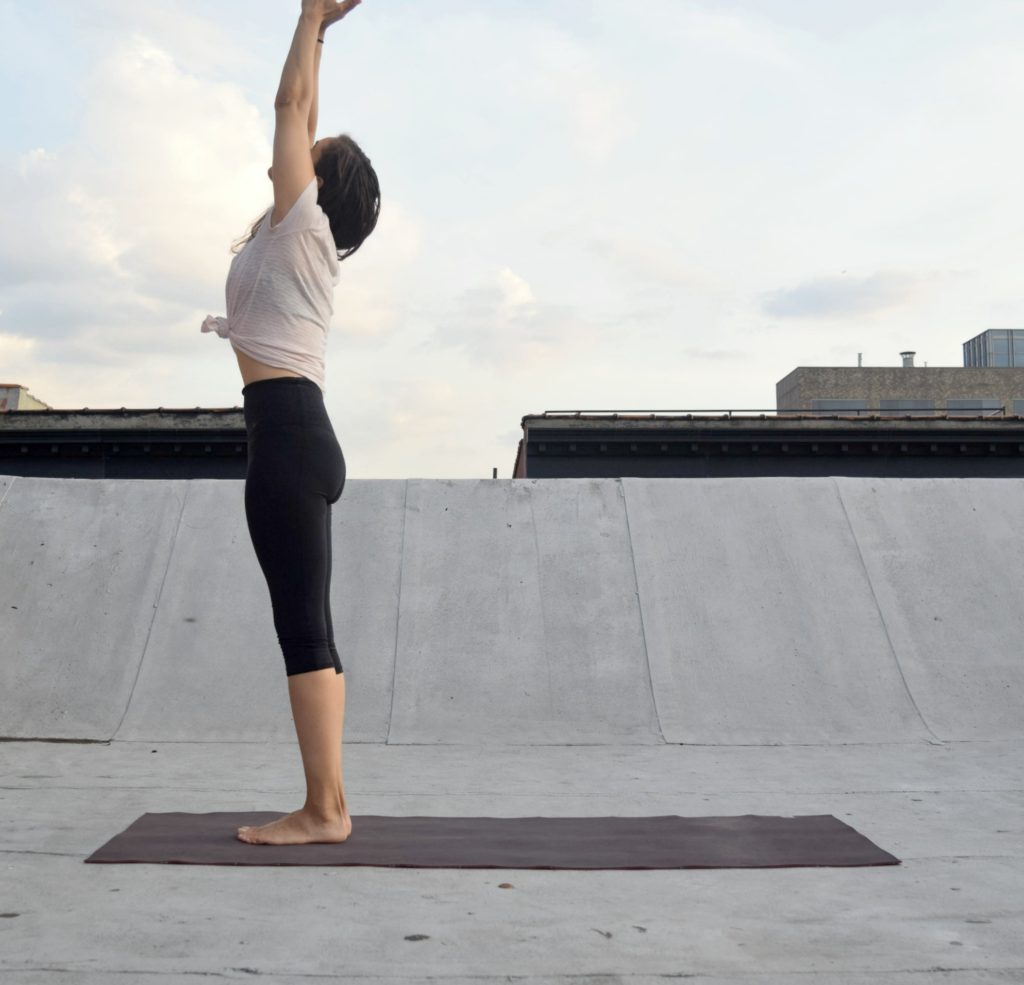
In Urdhva Hastasana we begin to connect breath with movement. This pose helps to lengthen the spine and the sides of the waist.
Begin in Tadasana with the palms facing forward. Turn the palms out towards the sides, so the pinkies point forward and thumbs point back (external rotation of the arms). Keeping your feet grounded and the legs firm, inhale and reach your arms towards the ceiling.
Although not necessary, you can bring the palms to touch overhead. Otherwise, keep the arms inline with the shoulders with the palms facing each other. As you come into this pose, root down firmly into the ground, as you lengthen the upper body up towards the celing.
3. Standing Forward Fold (Uttanasana)
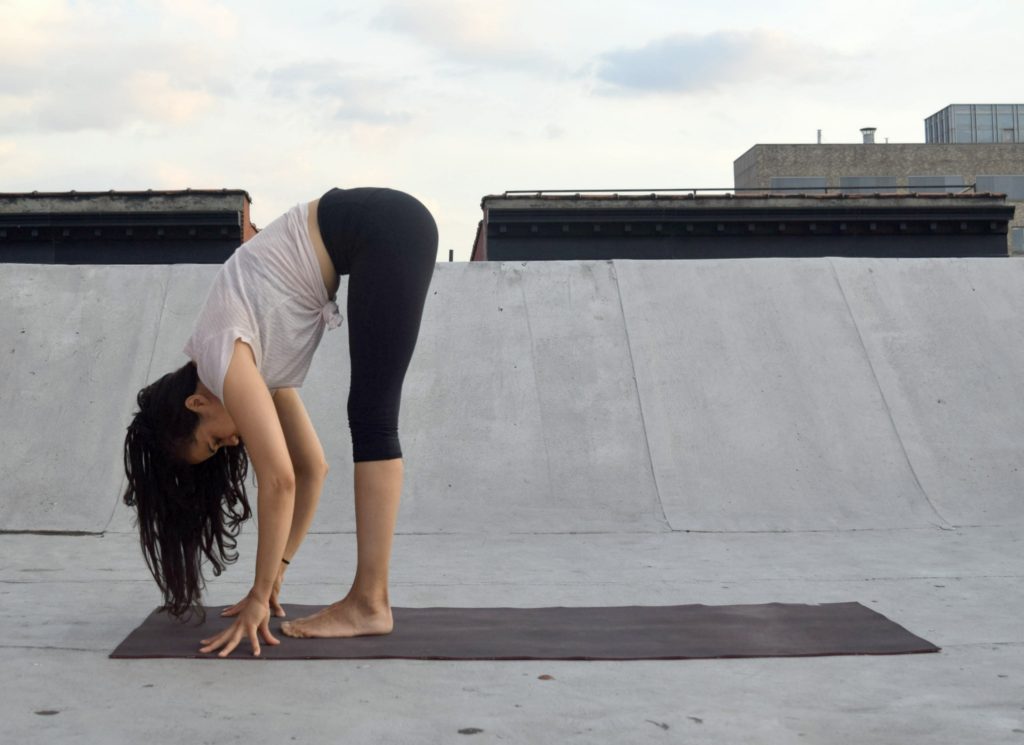
Uttanasana stretches the back body (legs, buttocks, and back), and strengthens the front body (thighs, core, and chest).
From Urdhva Hastasana, turn the palms out towards the sides. This time the thumbs point forward and the pinkies turn back (internal rotation of the arms). Bend your knees slightly and start to hinge at the hips as you dive the torso forward and over your legs. The movement from Urdvha hastasana to Uttanasana happens on the exhalation.
4. Ardha Uttanasana (Half Standing Forward Fold)
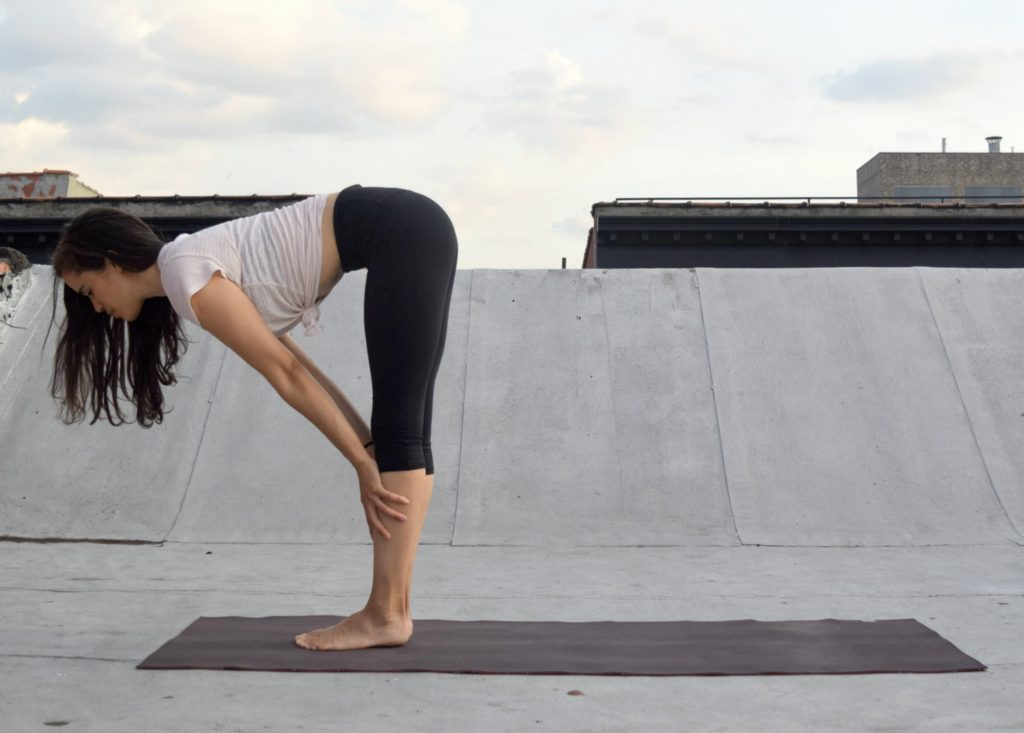
This poses stretches the back of the legs and lengthens the spine.
From Uttanasana, inhale as you bring your hands to either your thighs, shins, or the floor. Keep your hips over the feet, press your thighs back, but reach the crown of your head forward. Reach your chest forward and shoulders away from the ears.
5. Plank Pose
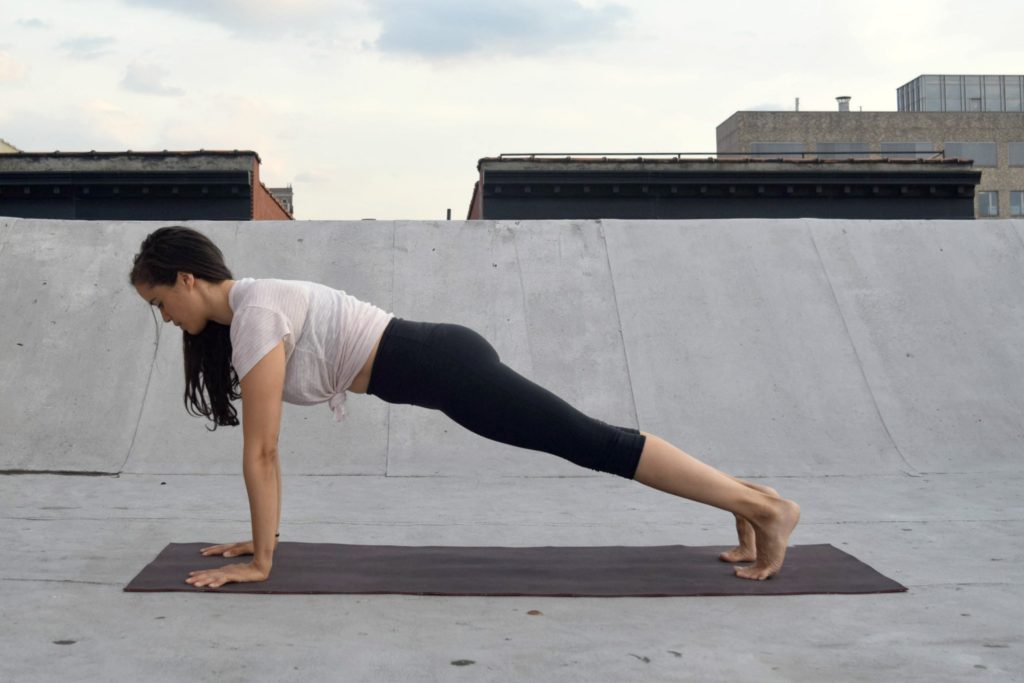
5. (a) Half Plank
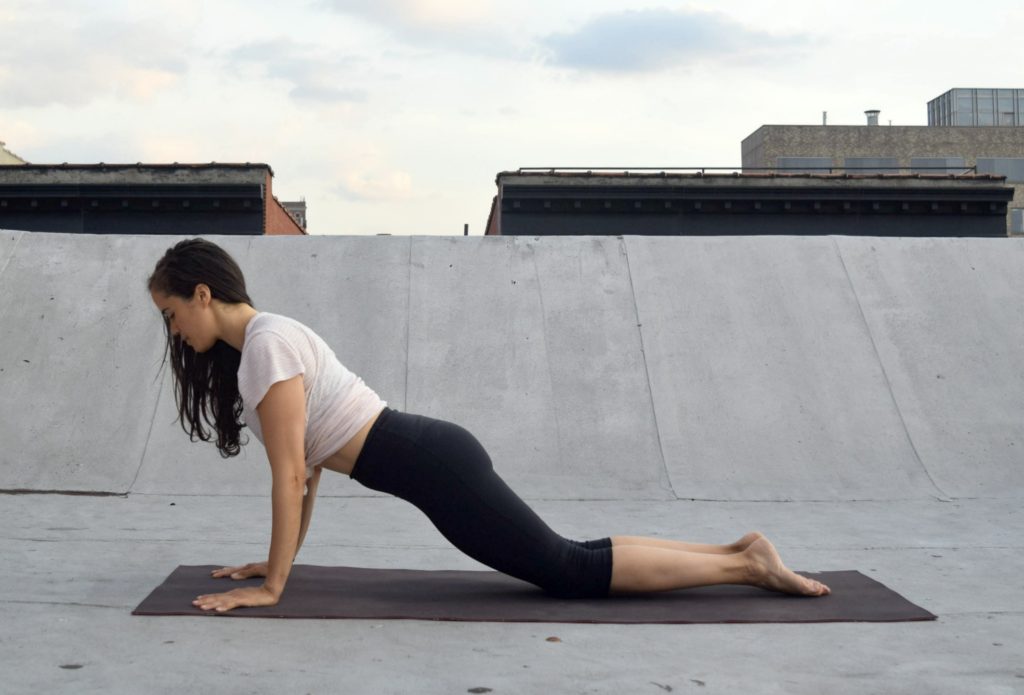
From Ardha Uttanasana, exhale and bend your knees enough to allow you to plant your palms on the floor and step your feet back into plank pose. Position your wrists under the shoulders, spread the fingers wide (without over stretching), and feel the entire hands rooting into the ground.
Hug the arms in, as if you were hugging a big beach ball. Once here, everything explained in Tadasana applies. Keep the ribs huggin in, pelvis neutral, thighs firm, and feet active (heels over the toes).
To modify…keep everything as is, but place your knees on the ground (see picture).
6. Four-Limbed Staff Pose (Chaturanga Dandasana)
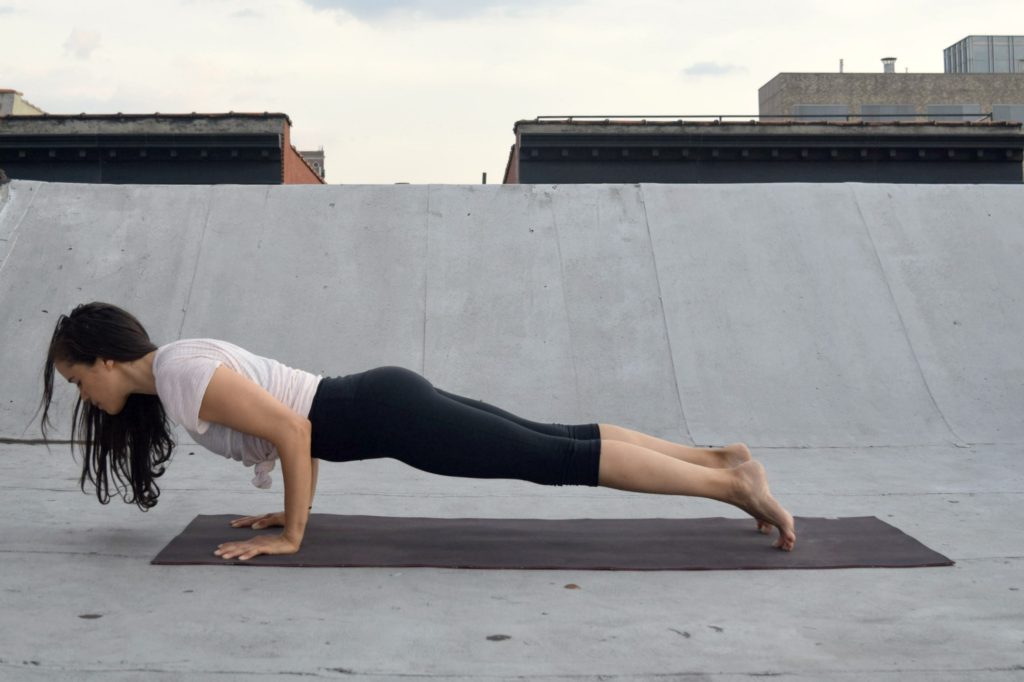
Chaturanga is a little more complex and it requires a good amount of upper body strength and flexibility. If you’re just starting out, practice Chaturanga with your knees on the ground while you build the strength necessary to safely practice Chaturanga.
Holding plank pose, imagine you were pressing your feet into a wall. Now imagine pushing off that wall as you lean forward and bend your elbows to a 90 (or slightly larger) degree. Avoid going lower than the elbows as this may cause your shoulders to round forward (internally rotate) and risk injury. From here, everything mentioned in plank pose applies. Keep the thighs firm, hug the ribs in, and hug the elbow in.
7. Cobra (Bhujangasana)
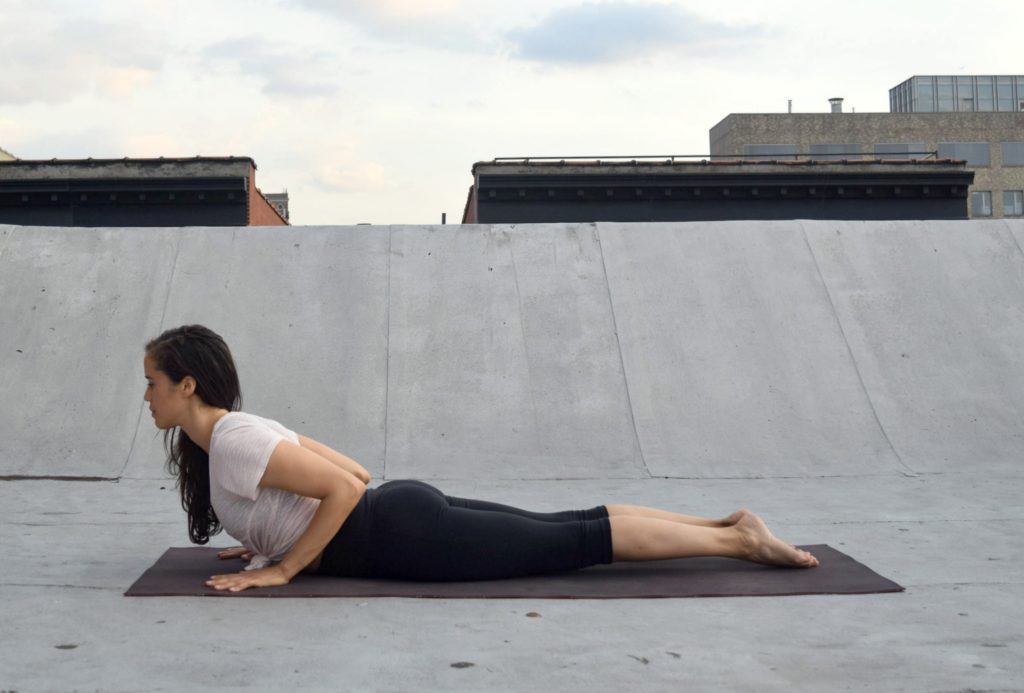
From Chaturanga, proceed to lower all the way down to the ground. Point your toes so that the tops of the feet press firmly into the mat. Place your hands under the shoulder heads, or a little bit behind, so that the elbows point straight back. On the inhalation, lift your chest off the ground. Reach the chest forward as you continue to press the tops of the feet down. Hug the elbows in towards the body.
8. Upward Facing Dog (Urdhva Mukha Shvanasana)
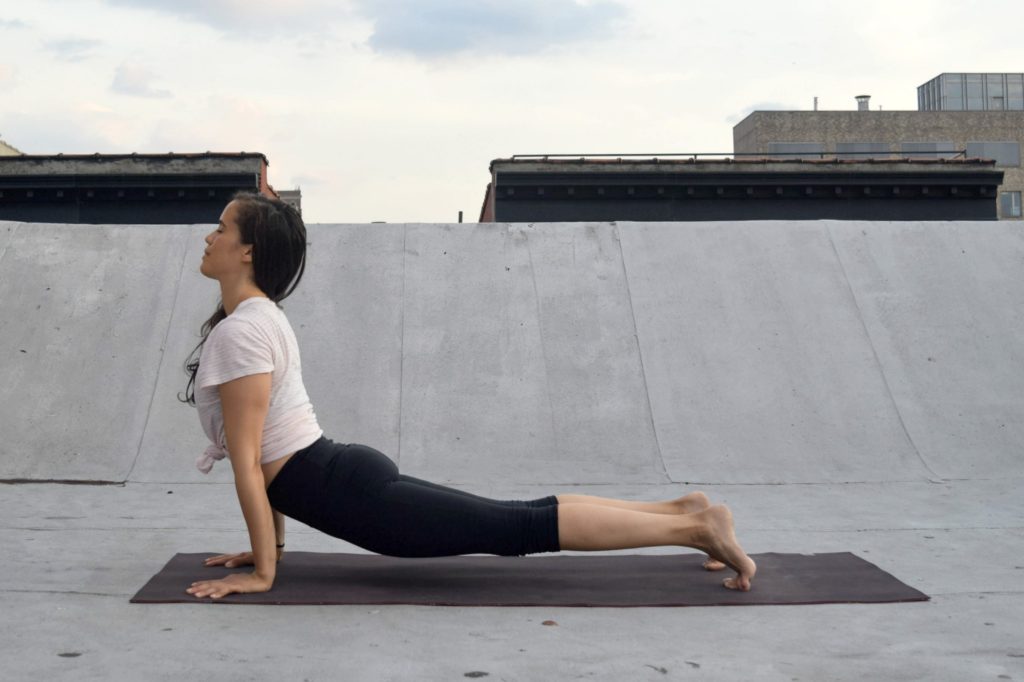
From Chaturanga, point the toes as in Cobra (or keep them curled as I did). Begin to straighten the arms. Draw the shoulders back as you reach the sternum (chest) forward.
9. Downward Facing Dog (Adho mukha Svanasana)
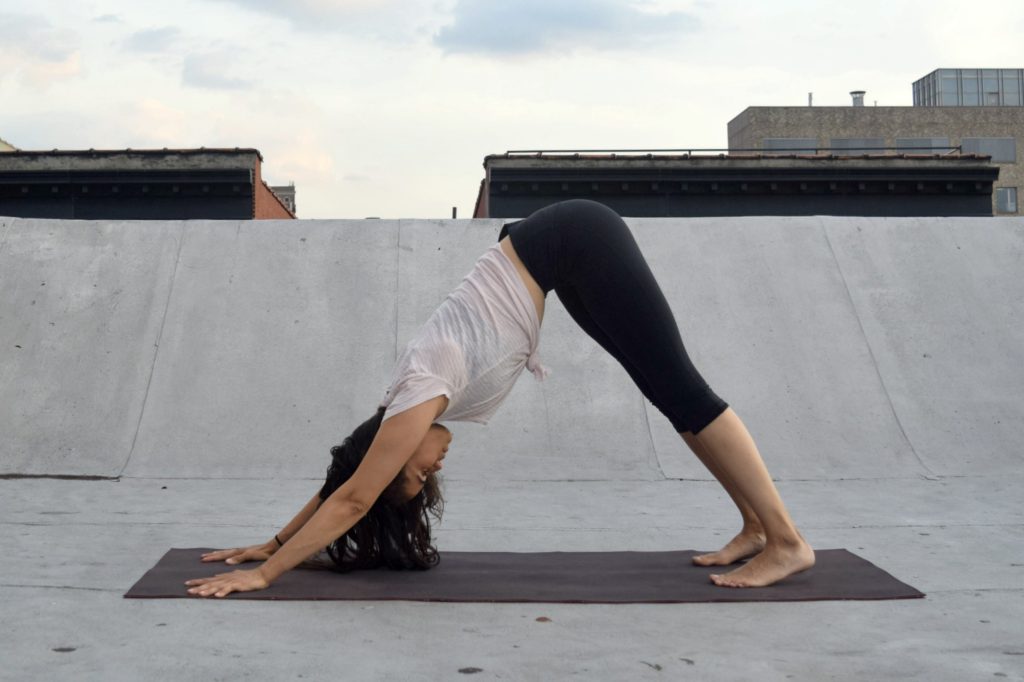
Downward facing dog stretches the back of the legs, lengthens the spine and torso, strengthens the arms and shoulders.
From Upward Facing Dog, curl the toes, bend your knees slightly and press up, as you bring your hips up and back towards the wall behind you. Once here, spread the fingers and firmly root down through the palms. Push the ground away and lengthen out through the torso. Keep the thighs firm and press them back, as you reach the heels towards the ground.
10. Jump or Walk Forward
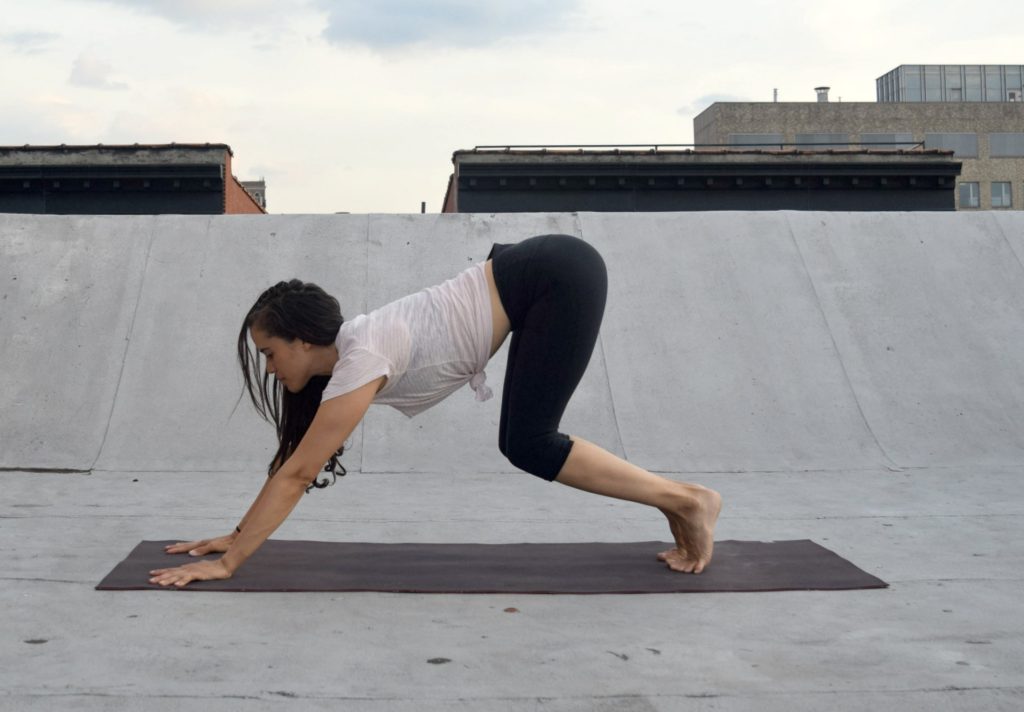
From downward facing dow, bend your knees and lift the heels really high. Look forward to the space between your hands, and either spring-jump forward, or walk to meet your hands. Proceed with poses 4-3-2-1.
Feel free to practice as many rounds as needed.
VIDEO TUTORIAL
SUBSCRIBE
Enter your info below to stay in touch, plus receive a FREE 5-minute Mental Reset Meditation
